là một chương trình vẽ vector, thường được sử dụng để vẽ hình minh hoạ, hoạt hình, biểu đồ, đồ thị. Adobe Illustrator được dùng để thiết kế : như thiết kế những sản phẩm trong ngành thiết kế quảng cáo, thiết kế in ấn, thiết kế logo, thiết kế bản hiệu, thiết kế thời trang, thiết kế thiệp mời, Tạo các sản phẩm tờ rơi, Cataloge, Card Visit, Broucher, Profile,vẽ hoạt hình, tích hợp chuyển động cho Flash...Adobe Illustrator ưu diểm là dễ dàng thay đổi và trao đổi dữ liệu, kích thước file nhẹ, dễ dàng tương thích với Photoshop, Corel Draw, và hỗ trợ in ấn rất tốt.
Hôm nay, trung tâm TIN HỌC KEY xin giới thiệu đến các bạn một hệ thống bài tập thực hành vẽ các đối tượng trong Adobe illustrator (Ai) (phiên bản tiếng anh, theo: vectips.com) có hướng dẫn chi tiết các bước thực hiện cụ thể để các bạn dễ dàng thực hành theo. Hôm nay chúng ta sẽ học bài 20: Create a Simple Thermometer lllustration in Adobe Illustrator. Hy vọng hệ thống bài học này sẽ mang lại cho bạn những kiến thức hữu ích trong quá trình bạn học Adobe illustrator (Ai).
Chúc các bạn thành công!
Create a Simple Thermometer lllustration in Adobe Illustrator
Final Image
As always, this is the final image that we’ll be creating:
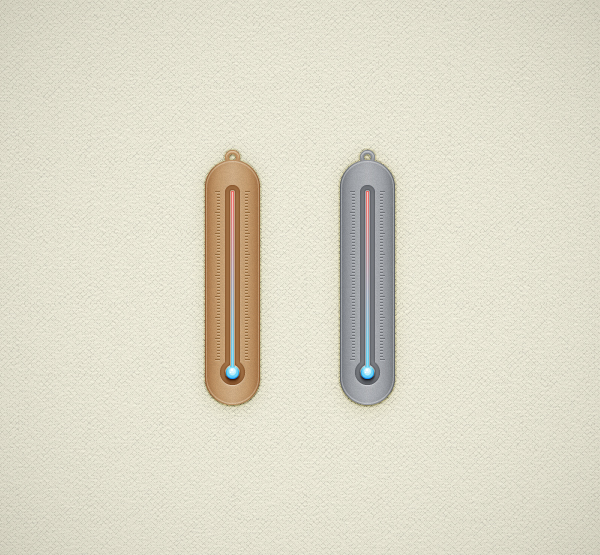
Step 1
Hit CTRL + N to create a new document. Select Pixels from the Units drop-down menu, enter 600 in the width and height boxes then click on theAdvanced button. Select RGB, Screen (72ppi) and make sure that the Align New Objects to Pixel Grid box is unchecked before you click OK. Enable the Grid (View > Show Grid) and the Snap to Grid (View > Snap to Grid). For starters you will need a grid every 5px, so simply go to Edit > Preferences > Guides > Grid, enter 5 in the Gridline every box and 1 in the Subdivisions box. You should also open the Info panel (Window > Info) for a live preview with the size and position of your shapes. Do not forget to set the unit of measurement to pixels from Edit > Preferences > Units > General. All these options will significantly increase your work speed.
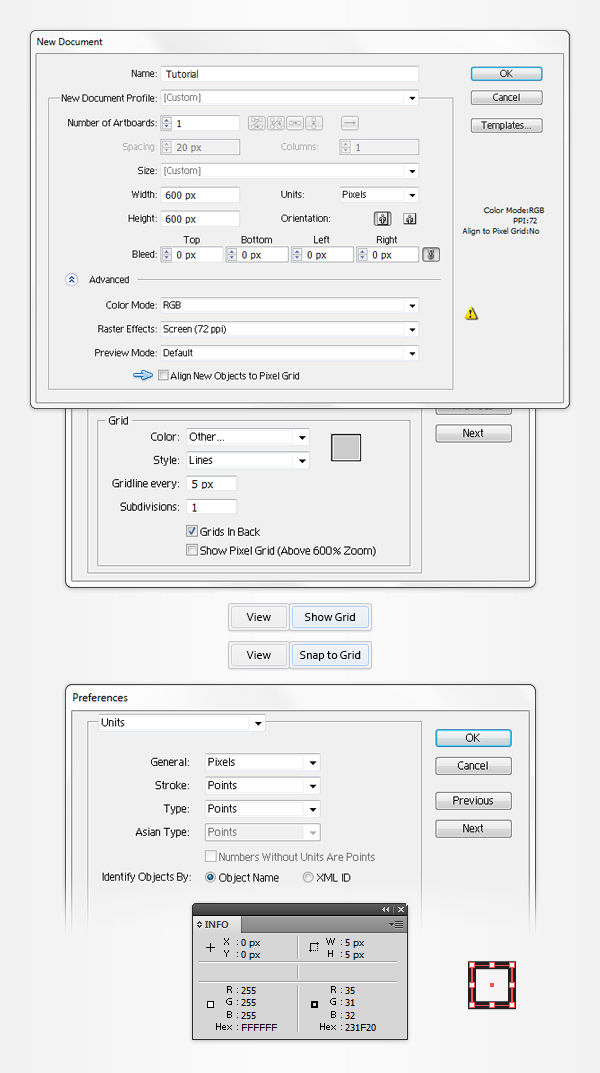
Step 2
Pick the Rectangle Tool (M) and focus on your Toolbar. Remove the color from the stroke; then select the fill, and set its color at R=160 G=163 B=168. Move to your artboard and simply create a 55 x 245px rectangle. Make sure that your rectangle stays selected and go to Effect > Stylize > Rounded Corners. Enter a 27.5px radius, click OK and go to Object > Expand Appearance.
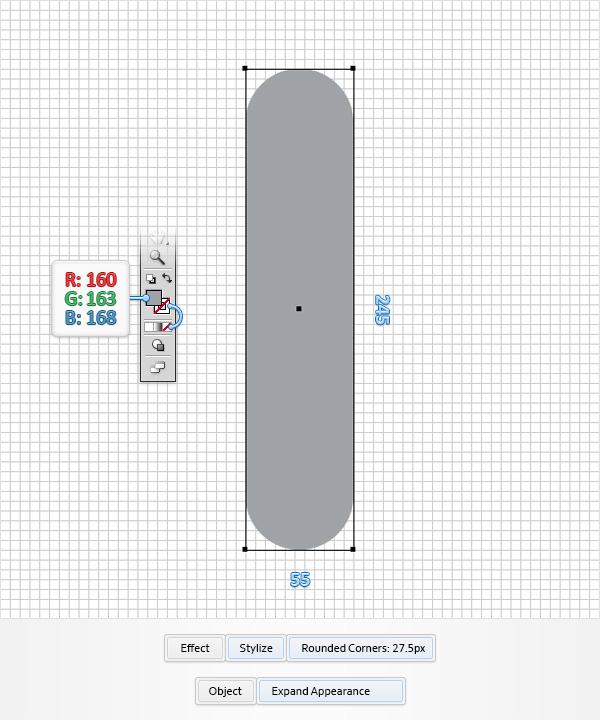
Step 3
Make sure that your rounded rectangle is still selected, open the Appearance panel (Window > Appearance), select the existing fill and go to Effect > Stylize > Inner Glow. Enter the properties shown in the following image and click OK. Return to the Appearance panel and add a second fill for your shape using the Add New Fill button (pointed by the little, blue arrow in the following image). Select this new fill, open the Gradient panel (Window > Gradient) and simply click on the gradient thumbnail to add the default black to white linear gradient. Make sure that your shape stays selected and keep focusing on the Gradient panel. First, set the Angle at 0 degrees. Next, select the left gradient slider and set the color at R=0 G=0 B=0 (black); then select the right gradient slider and use the same color. Focus on the gradient bar and simply click on it to add a new gradient slider. Make sure that this new slider is selected, set its color at R=255 G=255 B=255 (white), focus on the Location box (from the Gradient panel) and drag it at 50%. Keep in mind that the white numbers from the Gradient images stand for Location percentage. Add two new sliders for your gradient then use the color and Location attributes shown in the following image. Return to the Appearance panel, make sure that the second fill is still selected, lower its Opacity to 50% and change the Blending Mode to Soft Light.
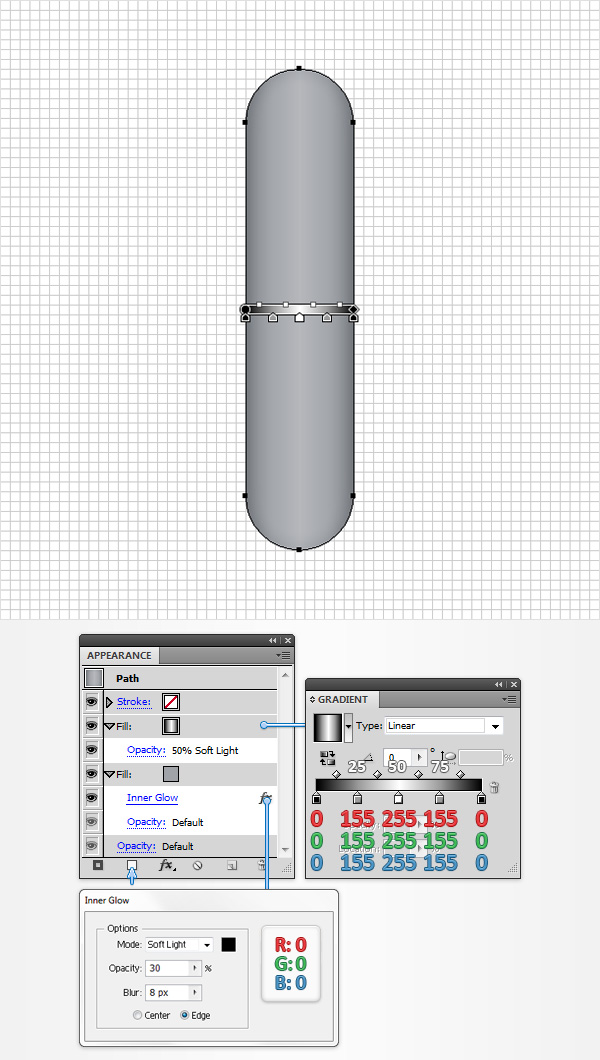
Step 4
Make sure that your rounded rectangle stays selected, focus on the Appearance panel and select the existing stroke. Set the color at black and the weight at 1pt. Then open the Stroke panel and check the Align Stroke to Inside button. Return to the Appearance panel, make sure that your black stroke is still selected, lower its Opacity to 30% and change the Blending Mode to Soft Light. Keep focusing on the Appearance panel and add a second stroke for your shape using the Add New Stroke button (pointed by the little, blue arrow in the following image). Select this new stroke, make it 1pt wide, set the color at white, align it to inside, lower its Opacity to 80% and change the Blending Mode to Soft Light. Then go to Effect > Path > Offset Path. Enter a -1px offset and click OK.
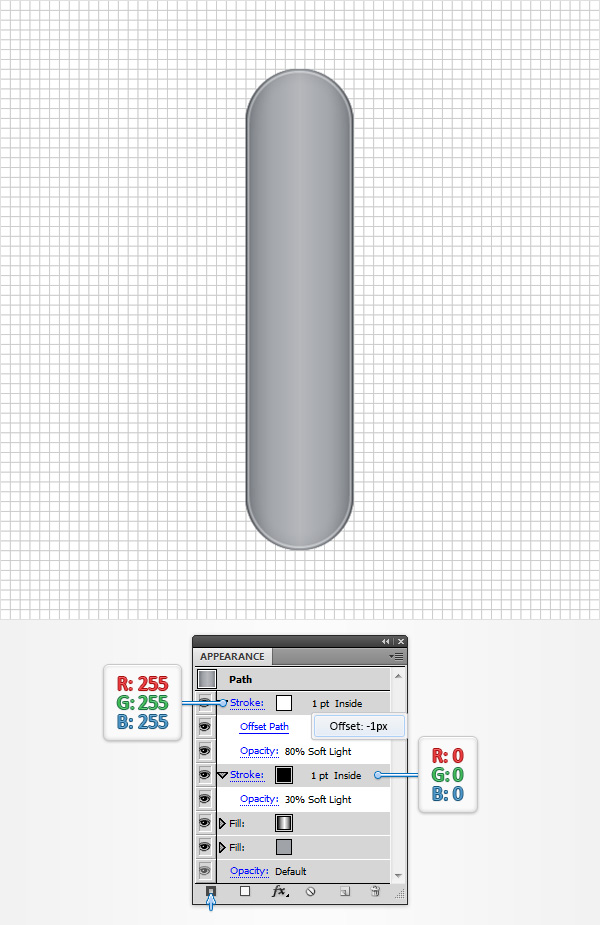
Step 5
Make sure that your rounded rectangle is still selected, focus on the Appearance panel, and add a third fill using that same Add New Fill button. Drag it in the top of the Appearance panel, set the color at black, lower its Opacity to 5%, change the Blending Mode to Multiply and go to Effect > Path > Offset Path. Enter a -1px offset, click OK and go to Effect > Artistic > Film Grain. Enter the attributes shown in the following image and clickOK.
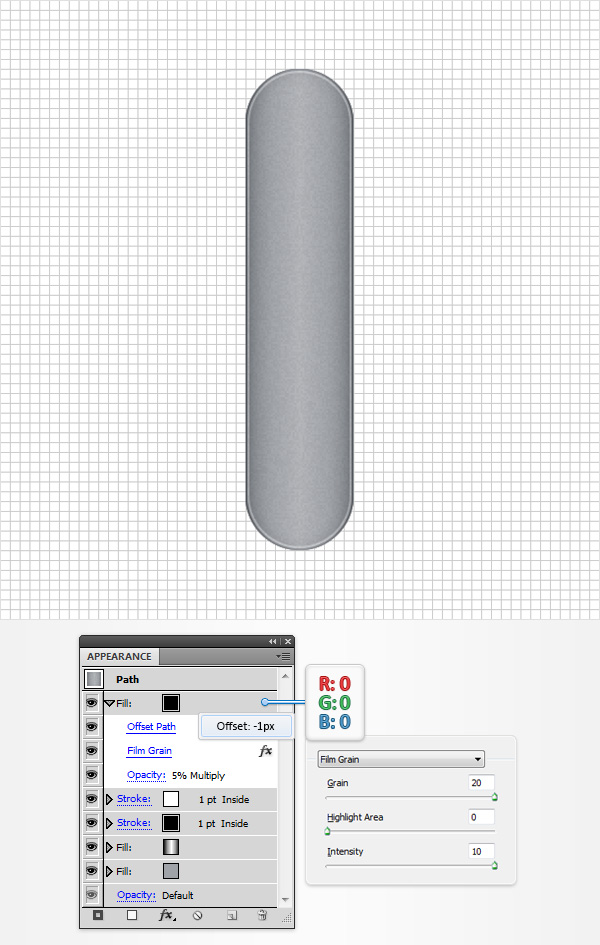
Step 6
Using the Ellipse Tool (L), create a 15px circle and place it as shown in the following image. Focusing on the Appearance Panel, add a 4pt stroke for this new shape, set the color at R=160 G=163 B=168 and align it to inside. Make sure that there is no color set for the fill; then go to Object > Path > Outline Stroke.
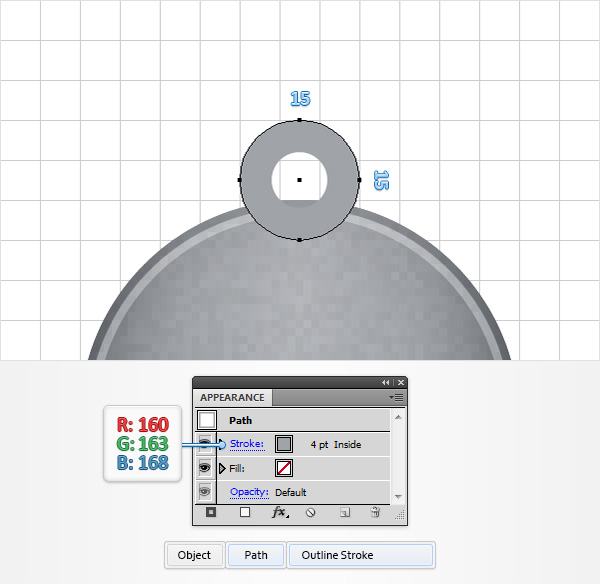
Step 7
Disable the Snap to Grid (View > Snap to Grid), then go to Edit > Preferences > General and make sure that the Keyboard Increment is set at 1px. Reselect the shape made in the previous step and go to Object > Path > Offset Path. Enter a -1px offset and click OK. Select the resulting shape and make a copy in front (CTRL + C > CTRL + F). Select this copy and move it 1px down using the down arrow button from your keyboard. Reselect both shapes made in this step, open the Pathfinder panel (Window > Pathfinder), and click the Minus Front button. Ungroup (Shift + CTRL + G) the resulting group of shapes, and fill those tiny paths with white. Select your bottom, white shape and Delete button it. Select the remaining white shape and simply change its Blending Mode to Soft Light.
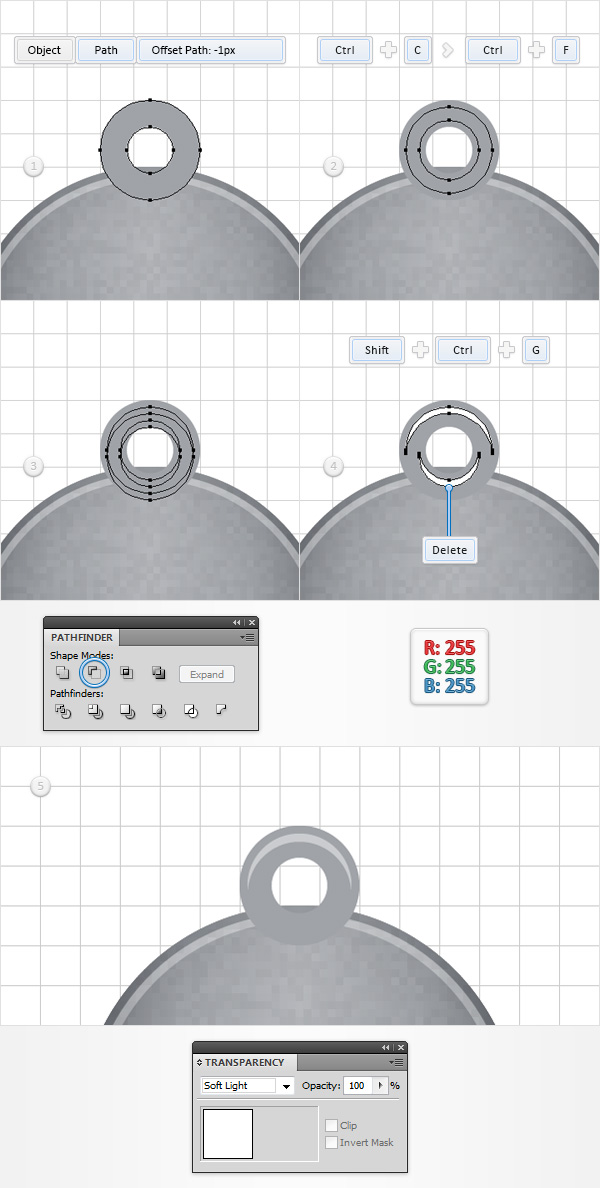
Step 8
Reselect your round shape, focus on the Appearance panel and add a 1pt, black stroke. Align it to inside, lower its Opacity to 40% and change theBlending Mode to Soft Light. Keep focusing on the Appearance panel, add a second fill and drag it above the stroke. Make sure that this new fill stays selected, set the color at black, lower its Opacity to 5%, change the Blending Mode to Multiply and go to Effect > Path > Offset Path. Enter a -1px offset, click OK and go to Effect > Artistic > Film Grain. Enter the properties shown in the following image and click OK.

Step 9
Reselect that round shape along with the thin, white shape and Group them (CTRL + G). Make sure that this new group is selected and simply hitShift + CTRL + ] to send it in the back.
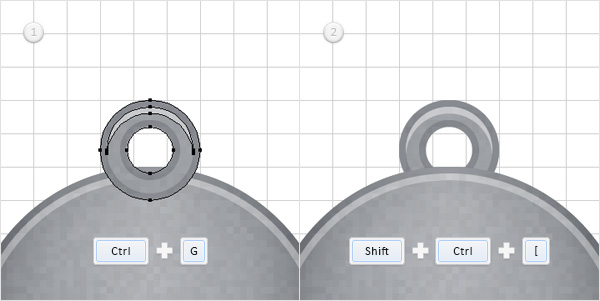
Step 10
Reselect the group made in the previous step along with the large rounded rectangle and Group them (CTRL + G). Move to the Layers panel, double click on this new group and simply name it “main“. Make sure that your “main” group is selected and make a copy in front (CTRL + C > CTRL + F). Select this new group and hit the Unite button from the Pathfinder panel. Select the resulting shape and simply hit the D button from your keyboard to replace the existing Appearance attributes with the default ones (white fill and a 1pt, black stroke). Move to the Layers panel (Window > Layers), double click on this new shape and simply name it “shadow“.
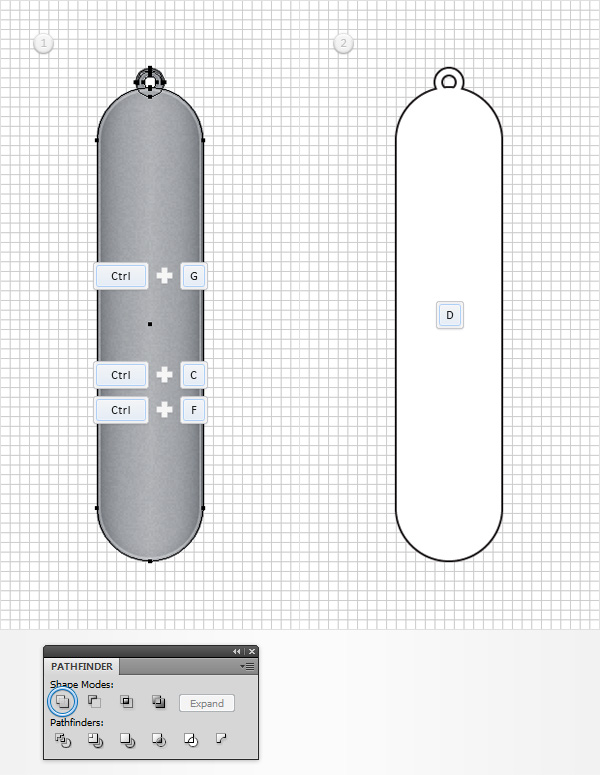
Step 11
Reselect your “shadow” shape, send it to the back (Shift + CTRL + [ ) and focus on the Appearance panel. First, select the fill and remove the existing color. Next, select the stroke, align it to outside, lower the Opacity to 10% and change the Blending Mode to Soft Light. Return to the Appearancepanel and add a second stroke for this shape. Select it, set the weight at 2pt, align it to outside, and make sure that the color is set at black. Then lower its Opacity to 5% and change the Blending Mode to Soft Light.
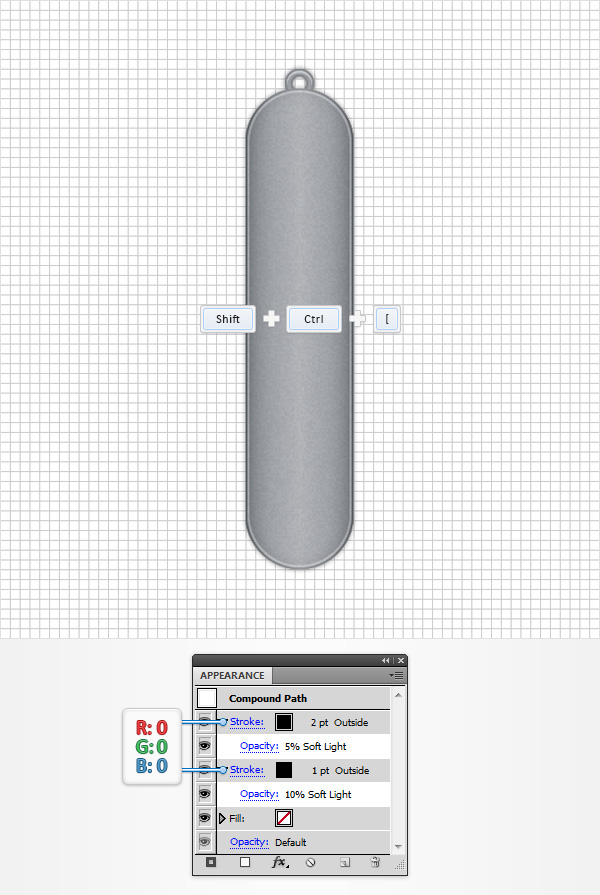
Step 12
Reselect your "main" group and go to Effect > Stylize > Drop Shadow. Enter the properties shown in the top, left window (in the following image), click OK and go again to Effect > Stylize > Drop Shadow. Enter the properties shown in the top, right window, click OK and go once again to Effect > Stylize > Drop Shadow. Enter the properties shown in the bottom, left window, click OK and go one more time to Effect > Stylize > Drop Shadow. Enter the properties shown in the bottom, right window and click OK.
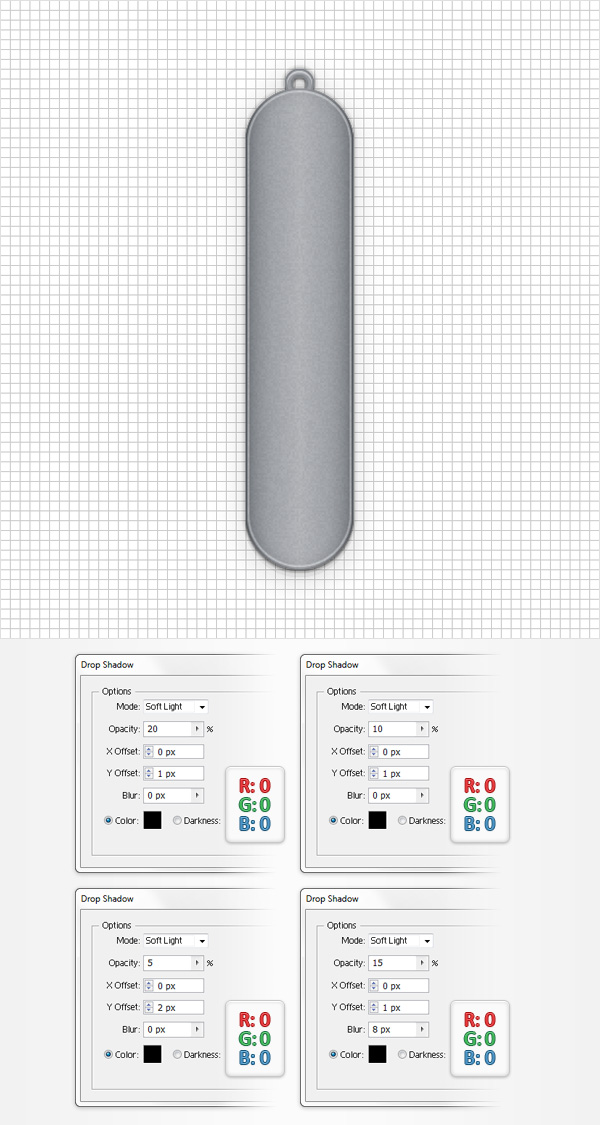
Step 13
Enable the Snap to Grid (View > Snap to Grid). Using the Rectangle Tool (M), create a 15 x 195px shape, set the fill color at R=150 G=153 B=158 and place it as shown in the following image. Make sure that this new rectangle is selected and go to Effect > Stylize > Rounded Corners. Enter a 7.5px radius, click OK and go to Object > Expand Appearance.
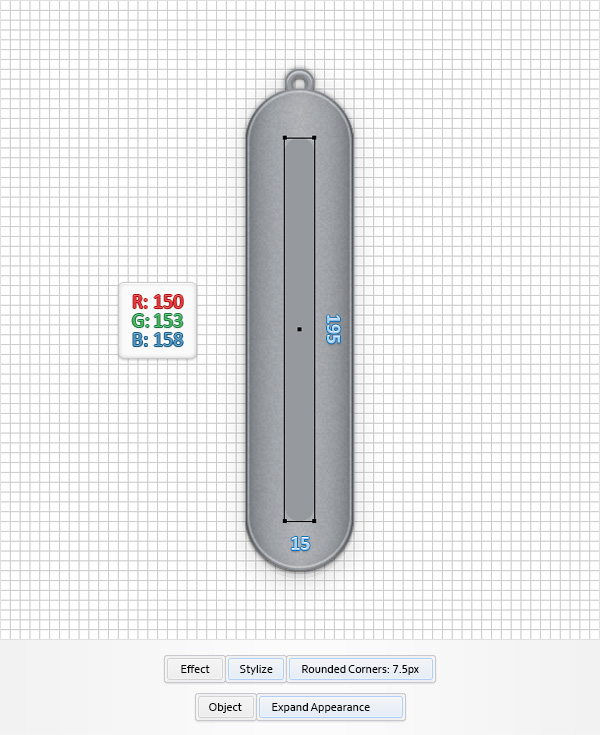
NHẤP VÀO ĐÂY để xem các bước tiếp theo ......
Trung Tâm TIN HỌC KEY
ĐC: 203 -205 Lê Trọng Tấn - Sơn Kỳ - Tân Phú - TP HCM
ĐT: (028) 22 152 521
